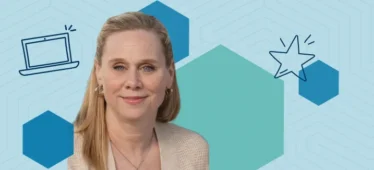In the lending market, one thing is certain, and that is change. Characterized by complex shifts and dynamics that are often hard to understand, the lending landscape is always evolving. For financial institutions, merchants, and technology providers, participating in this multifaceted sector requires a constant ‘ear to the ground.’ At LoanStar, alignment with the ever-changing lending landscape is a pre-requisite to our ability to deliver the lending opportunities our customers value most. One of the ways in which we remain aligned with the industry is through connection with colleagues and partners who are on the front lines.
Following are a few takeaways from our interactions over the second half of 2023 with lenders, partner Fintech companies and industry consultants we trust:
- 2023 loan volume was on the rise – Lenders still need to lend
Market data shows a recent, marked increase in the volume of loans—a contrast to the numbers we saw at the end of 2022 and H1 of 2023. Even during traditionally slow months, like August, we noticed a substantial increase in loan sale transaction numbers taking place across the markets. This uptick indicates a positive shift in the lending landscape as the market begins to open up again—offering optimism for lenders who are looking to grow their loan portfolios in the new year. Lenders will still need to compete against their competition and new disruptors in strategic markets, but we are definitely seeing loans flow in targeted spots.
- The market is shifting away from marketplace fintech loan purchasing
Next, we’ve been talking to many credit unions in an attempt to unpack the decline in marketplace lending and, in particular, models that are built around loan purchasing instead of loan origination. The takeaway: delinquencies in marketplace purchased loans are on the rise and these loans are losing value. This can be attributed to a variety of factors, including unrealistic expectations due to lower interest rates at time of origination, a historical willingness to take on more risk, and the impact of rising interest rates. As we move into 2024, it is expected that the lackluster performance in purchased loans will result in a greater focus around direct origination strategies where lenders have more pricing and credit control, rather than purchasing from a fintech originator. We don’t see that the performance challenges with purchased loans reflect unsecured lending on the whole, as unsecured lending is a valuable approach to loan diversification. We do see an opportunity to be more involved in loan application pricing and underwriting, along with targeted loan purposes that lend themselves to better reliability from borrowers. This brings us to our third takeaway.
- Diversification matters more than ever
A third notable takeaway from our conversations with experts in the lending space was the widespread emphasis on diverse lending. Last year, auto loans continued to be a top player for many credit unions, as it usually can be—some placing a very significant strategic focus on the lending category. Relying solely on one or two lending verticals can be risky, as economic fluctuations and market trends can impact the performance of isolated loan categories in an outsized way. At the end of 2023 we started seeing some motion away from auto and into unsecured that leans toward a higher WAC and similar losses to autos—a move to maximize value on capital. Diversification is key, not only for its ability to mitigate risk but also for its ability to open the door to new revenue opportunities. By launching into new loan verticals, financial institutions can gain access to new borrowers, who will potentially become new depositors and customers over time. The focus on growing depositors coincides with our second takeaway, as these opportunities are not available when a financial institution is merely purchasing marketplace loans. Conclusion: Differentiate and diversify with embedded lending
The growth in loan volume—which will intensify competitive dynamics and the need for differentiation—and the focus on diversified loan origination—which will support more sustainable financial performance and growth in deposits—both point to the need for new plans, like embedded lending, that is consumer-centered, turnkey, and highly adaptive. Embedded lending ultimately helps you reach your target borrowers directly where they transact.
At LoanStar, our clients are harnessing our MerchantLinQ platform, which enables them to originate loans in targeted verticals—growing and diversifying their portfolios in a manner that supports the short- and long-term goals of their institution. The best part? Our platform delivers increased transparency and an exceptional user experience for lenders, merchants, and borrowers alike—supporting differentiation in a crowded lending landscape.
If you are a credit union or bank looking to strategically prepare for this year’s lending dynamics, please don’t hesitate to reach out. We’d love to give you a look at the platform and discuss how it can advance your goals in 2024 and beyond.



